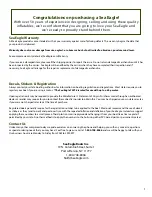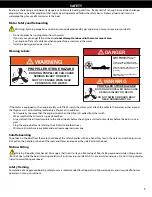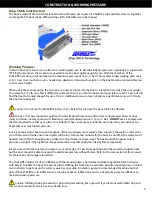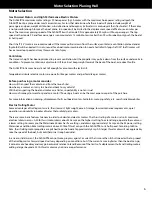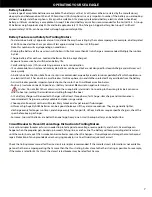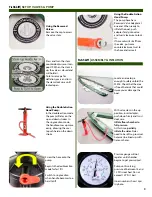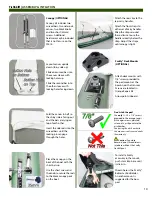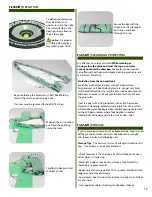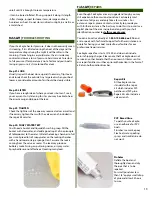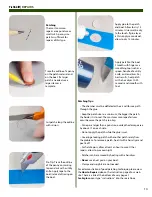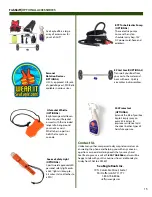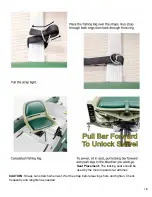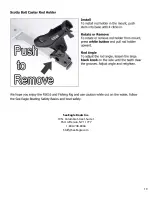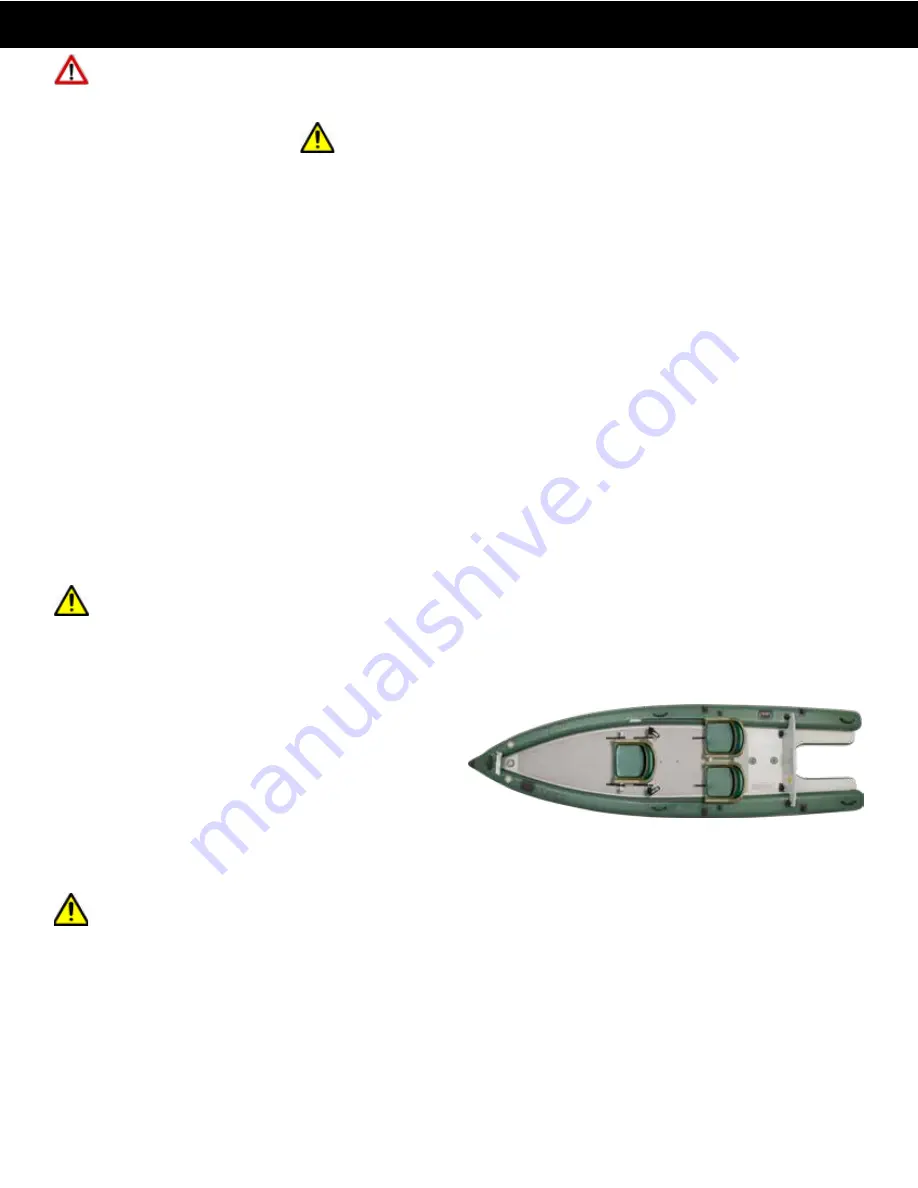
5
OPERATING YOUR SEA EAGLE
Capacity Ratings and Dimensions:
Persons:
3 Persons
Total Weight Capacity:
1765 lbs
Maximum Engine Rating:
6 HP, Short Shaft Recommended
Chambers:
3
Length:
16’
Boat Weight:
79 lbs (90 lbs. with transom)
Width:
4’ 8”
Additionally, the FishSkiff16 can be outfitted with a secondary electric trolling motor mounted on the optional Sea Eagle Kayak
Motor Mount using the D-rings near the bow.
WARNING:
This product can expose you to chemicals including DEHP (Di(2-ethylhexyl)phthalate), which is known to the
state of California to cause Cancer, Birth Defects or other reproductive harm.
For more information go to
www.P65Warnings.ca.gov
Compliance
Sea Eagle boats comply with ABYC Standards, US Coast Guard standards for recreational boats and labeling for compliance with
California proposition 65.
Invasive Species Control
: If the boat is to be used in multiple waterways, fully drain the boat, rinse and dry between uses. Flush
the channel between the side chambers and floor chamber with a disinfectant such as a mild bleach solution. Call or check
website for local fish and wildlife authority for more information on how to prevent the spread of invasive plants and animals. Your
Sea Eagle is resistant to most steam and most chemicals.
Caution
BEFORE & DURING USE:
Avoid damage. Do not drag your Sea Eagle over abrasive surfaces like asphalt parking lots,
or concrete boat ramps, whether the boat is in its bag or inflated. Carry or wheel your Sea Eagle from the car to the setup point,
and then to the water when assembled.
SPEEDING and UNBALANCED LOAD:
Warning:
Avoid unbalanced loading of the boat. Boat could capsize causing injury
to passengers. Distribute gear and passengers evenly front-to-back and side-to-side. When one person is driving the boat without
passengers, be sure to control boat speed; the front of the boat is wide, flat and light weight, it could rise up suddenly when
running the motor at high speed, especially when heading into the wind.
Balanced distribution of passengers and gear can also help with boat performance, for example: getting the boat to plane or
preventing propeller ventilation.
ROCKS AND STICKS
usually will not damage a Sea Eagle but be alert for partially hidden or submerged hazards like metal signs,
shopping carts, and other debris especially during periods of low water. Be careful of docks and pilings which may have exposed
nails, screws, and marine life such as barnacles and oysters.
FISH SPINES:
Many species of fish have sharp spines than can cause small punctures in the FishSkiff16. Do not allow fighting fish
to bump the boat. Use a net to lift fish out of water when possible.
PADDLING:
Most of the power should come from your torso. Your arms contribute, but too much reliance on your arms will
cause you to tire quickly. For good balance, keep your head up and eyes focused on the horizon. Start paddling gently and
smoothly. As the boat picks up speed it will maintain a truer heading. If you dig in hard at first you will create more yaw. Course
corrections can be made by easing up or bearing down on one side or the other. Gentle turns can be made by sweeping water
behind the boat.
In a crosswind, paddle more on the downwind (leeward) side of the boat to keep on a straight course. Paddling on the upwind
side will cause the boat to turn down wind.
SELF BAILING:
The FishSkiff16 is designed to be self draining. Water coming over the bow or sides will drain around the transom.
Warning:
Do not block water from flowing around transom. Blocking the transom area with gear such as coolers and tackle
boxes could prevent rapid drainage which could cause the boat to fill with water in heavy seas or crossing another boat’s wake.
The boat will not sink, but passengers may panic or get injured, and gear could be lost overboard.


